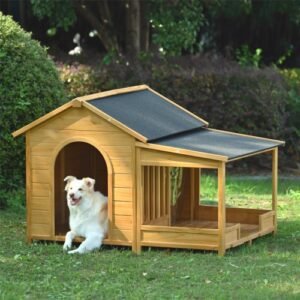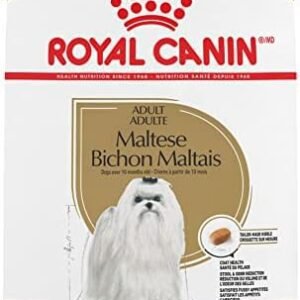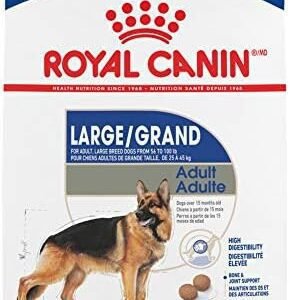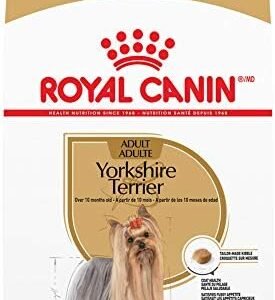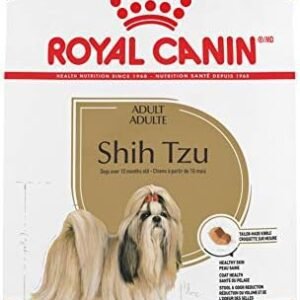Introduction
Have you ever wondered if your canine companion can savor the delectable delight of beef bones? Beef bones are often hailed as a mouthwatering treat, enjoyed by humans around the world. But what about our furry friends? Can dogs eat beef bones, or does this culinary adventure pose hidden dangers? In this article, we embark on a journey to answer this intriguing question and uncover the secrets behind beef bones in your dog’s diet. We’ll delve into the pros and cons of including beef bones in your dog’s meals, explore the optimal serving sizes, and equip you with the knowledge to ensure your dog’s safety when indulging in this treat. So, let’s unravel the delicious mystery of beef bones and discover if they are a savory delight or a potential hazard for your beloved pet.
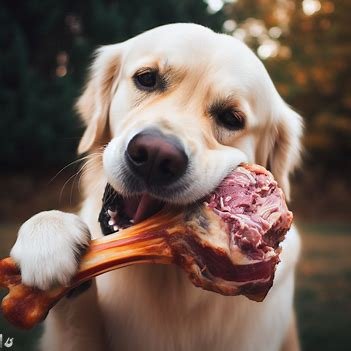
Table of Contents
Can Dogs Eat Beef Bones?
Dogs are renowned for their hearty appetites and their enthusiasm for trying new foods. So, when it comes to beef bones, it’s only natural for pet owners to wonder whether their furry friends can partake in this age-old treat. The thought of a dog gnawing on a bone is iconic, conjuring images of content canines relishing the flavors and textures of a hearty meal. In this section, we will explore whether dogs can indeed enjoy beef bones, the nutritional value they offer, and any potential concerns that need to be addressed.
Is Beef Bones Safe for Dogs?
Beef bones are generally considered safe for dogs, provided that you take some essential precautions. Dogs, being natural carnivores, possess strong jaws and teeth adapted for tearing and chewing. Chewing on beef bones can help keep their teeth clean and improve their jaw strength. The act of chewing bones can also provide mental stimulation and alleviate boredom. Many dogs enjoy the specific taste and texture of beef bones.
However, it’s crucial to understand the distinction between cooked and raw beef bones. Cooked bones can pose risks to dogs, as they become brittle and are more likely to splinter when chewed, potentially causing harm. On the other hand, raw bones are less prone to splintering and are generally safer for dogs. Before offering beef bones to your dog, consult with your veterinarian to ensure that it’s a suitable option for your specific pet.
Nutritional Benefits of Beef Bones
Beef bones offer several nutritional benefits for dogs. They are a natural source of essential nutrients, including calcium and phosphorus, which contribute to strong bones and teeth. These nutrients are particularly important for growing puppies and canines with active lifestyles. Beef bones also provide some key vitamins and minerals such as vitamin B12, iron, and zinc. These essential nutrients are vital for a dog’s overall health and well-being.
While beef bones can be a valuable addition to your dog’s diet, it’s essential to remember that they should complement, not replace, your dog’s primary food source. The bones should be offered as an occasional treat rather than a staple in their diet. Maintaining a balanced diet is crucial to ensure your dog receives all the necessary nutrients for a healthy life.
Potential Drawbacks of Beef Bones
As much as beef bones can be a delightful treat for your dog, they are not without potential drawbacks. The main concern with beef bones, especially when cooked, is the risk of splintering. Splintered bones can lead to serious injuries, including mouth injuries, choking, and digestive tract problems. This is why it’s generally advised to offer raw, uncooked bones to your dog, as they are less likely to splinter and pose fewer risks.
Another concern is overconsumption. Dogs can become overly enthusiastic when presented with a beef bone, and excessive chewing can lead to dental wear and even damage. Always supervise your dog while they’re enjoying a bone to prevent any potential issues.
For dogs with specific dietary needs, allergies, or digestive sensitivities, beef bones may not be the best choice. As with any new food, it’s essential to introduce beef bones gradually and monitor your dog for any adverse reactions.
In the next section, we will discuss how much beef bone is suitable for your dog, ensuring that you provide this treat in moderation and maintain their safety and well-being.
How much Beef Bones can a dog eat?
When it comes to feeding your dog beef bones, moderation is the key to ensuring their safety and enjoyment. While these bones offer a range of benefits, it’s essential to manage the quantity and frequency of consumption to prevent potential issues. Here are some guidelines to consider when offering beef bones to your dog:
1. Keep Treats in Proportion
It’s crucial to strike a balance in your dog’s diet. Dog treats, including beef bones, should not exceed 10% of your dog’s daily calorie intake. The majority of their nutrition should come from a complete and balanced dog food. This ensures that your dog receives the essential nutrients required for their overall health.
2. Start Small
For dogs who have never had beef bones before, it’s advisable to start with a small piece and observe their reaction. Some dogs may take to it immediately, while others may need time to adapt to the new treat. This initial step allows you to gauge your dog’s preference and whether they tolerate the bones well.
3. Prepare the Bones Carefully
If you decide to offer your dog beef bones, it’s important to prepare them properly. As mentioned earlier, raw bones are generally safer than cooked bones. Raw bones are less likely to splinter, reducing the risk of injury to your dog’s mouth and digestive tract. Always consult your veterinarian or a pet nutritionist for guidance on sourcing, handling, and preparing beef bones for your dog.
4. Consider Your Dog’s Size and Breed
The size and breed of your dog can significantly affect how much beef bone they can tolerate. Larger dogs, like Great Danes or German Shepherds, may be able to handle larger bones more comfortably. Conversely, small breeds and puppies should be given smaller, appropriately sized bones to ensure their safety.
When selecting bones for your dog, it’s important to choose options that match their size and chewing habits. Larger, stronger dogs may require more substantial bones to satisfy their chewing needs, while smaller dogs should have smaller bones that are easy for them to manage.
5. Serving Sizes Based on Weight
The appropriate serving sizes for beef bones should be based on your dog’s weight. As a general guideline, you can consider the following recommendations:
- Small Dogs (up to 20 lbs): Small bones or bone fragments, like chicken necks or wing tips.
- Medium Dogs (20 to 50 lbs): Larger bones, such as chicken thighs or turkey necks.
- Large Dogs (50 lbs and up): Larger bones, such as beef ribs or marrow bones.
Always remember that these are general recommendations, and individual dogs may have different preferences and tolerance levels. Additionally, if your dog has specific dietary needs or sensitivities, consult with your veterinarian or a pet nutritionist to determine the best approach.
In the following section, we will delve into the potential risks associated with feeding beef bones to dogs, including issues related to food allergies and potential hazards. It’s essential to be aware of these risks and monitor your dog’s response to this treat.
What are the Risks of Feeding Beef Bones to Dogs?
While beef bones can be a delightful treat for many dogs, it’s important to be aware of the potential risks and hazards associated with feeding them to your furry friend. Here, we’ll discuss some of the common concerns and issues related to beef bone consumption in dogs.
1. Food Allergies:
Just like humans, dogs can have food allergies or sensitivities. Beef is one of the common allergens in canine diets. If your dog has a beef allergy, feeding them beef bones can lead to various adverse reactions. Symptoms may include itching, skin problems, digestive issues, and even respiratory problems. If your dog is known to have food allergies, it’s essential to avoid beef bones and opt for alternative treats.
2. Short-term Signs of Food Intolerance:
Food intolerance refers to a dog’s difficulty in digesting certain foods, which can result in gastrointestinal distress. When it comes to beef bones, the following short-term signs may indicate food intolerance:
Vomiting: If your dog vomits shortly after consuming a beef bone, it could be a sign that their digestive system is having trouble handling it.
Diarrhea: Loose stools or diarrhea can occur if the beef bone upsets your dog’s stomach. Pay attention to the consistency and frequency of their bowel movements.
Excessive Gas: Some dogs may experience gas or flatulence after eating beef bones. This is often a result of gastrointestinal discomfort.
- Bloating: Although less common, excessive swallowing of air while eating beef bones can cause bloating, which can be a serious condition requiring immediate veterinary attention.
3. Potential Hazards of Bone Components:
Certain components of beef bones can pose hazards to dogs. These include:
Splintering: Cooked bones, especially those from poultry like chicken or turkey, are more likely to splinter when chewed. Splintered bones can cause sharp fragments that may injure a dog’s mouth, throat, or digestive tract. This is why it is recommended to feed dogs raw, uncooked bones.
Tooth Fractures: The hard texture of some beef bones can be tough on a dog’s teeth. While chewing, dogs might crack or break their teeth. Broken teeth can be painful and require veterinary treatment.
Obstruction and Perforation: Ingesting large or hard bone fragments can lead to intestinal blockages or perforations. This is a severe medical emergency that necessitates immediate veterinary attention. Symptoms may include abdominal pain, vomiting, diarrhea, and a hunched posture.
4. Signs of Allergic Reactions:
Allergic reactions can manifest in a variety of ways in dogs. If your dog has a beef allergy and you notice any of the following signs, it’s essential to seek veterinary care promptly:
Itching and Skin Problems: Dogs with beef allergies may scratch excessively, develop hives, or experience skin redness and inflammation.
Digestive Issues: Gastrointestinal symptoms can include vomiting, diarrhea, and abdominal discomfort.
Respiratory Problems: In severe cases, allergic reactions can lead to breathing difficulties. Watch for signs of labored breathing, coughing, or wheezing.
5. Specific Issues with Consuming Beef Bones:
Apart from allergies and short-term food intolerance, there are specific issues linked to consuming beef bones:
Pancreatitis: Some dogs are prone to pancreatitis, which can be triggered by high-fat foods like marrow-rich beef bones. This condition leads to inflammation of the pancreas and requires careful dietary management.
Fat Content: Beef bones with a high fat content can be too rich for some dogs and may cause gastrointestinal issues or pancreatitis.
Weight Gain: Excessive consumption of beef bones can lead to unwanted weight gain, as these treats can be calorie-dense. It’s important to account for the calories from beef bones in your dog’s overall diet.
6. Signs and Symptoms of Adverse Reactions:
When feeding your dog beef bones, be vigilant for any signs or symptoms of adverse reactions. These may include:
Vomiting and diarrhea: Occurring shortly after consuming beef bones.
Lethargy: If your dog appears unusually tired or listless.
Abdominal Discomfort: Signs such as whining, hunching, or a tense belly can indicate pain or discomfort.
Pawing at the mouth: A dog may paw at their mouth or face if they experience irritation or discomfort in the mouth or throat.
Excessive drooling: Drooling that is excessive or persistent could be a sign of distress.
Swallowing difficulties: If your dog appears to struggle with swallowing or exhibits signs of choking.
- Changes in behavior: Unusual behaviors or restlessness may indicate discomfort or distress.
If you notice any of these signs or if you suspect an allergic reaction or food intolerance, contact your veterinarian promptly. In the following section, we will explore how to feed beef bones to your dog safely and enhance their dining experience.
How to Feed Beef Bones to Your Dog and Make It More Enjoyable for Them
Feeding beef bones to your dog can be a delightful experience for both you and your furry friend. It’s essential to ensure that this treat is not only safe but also enjoyable for your dog. In this section, we’ll explore different ways to feed beef bones to your dog, how you can make it an enjoyable experience, and even some creative ideas for using beef bones in homemade treats and snacks.
1. Choosing the Right Beef Bones:
When it comes to feeding your dog beef bones, choosing the right type of bones is crucial. It’s best to opt for raw or uncooked beef bones, as they are less likely to splinter and pose fewer risks. Cooked bones, especially from poultry, can splinter and cause serious health issues.
Some suitable beef bones for your dog include:
Beef Marrow Bones: These large bones are filled with nutrient-rich marrow that dogs often find irresistible.
Knucklebones: These beef bones are dense and durable, providing an excellent surface for your dog to chew on.
Neck Bones: These are meaty and can offer a satisfying chewing experience for your dog.
- Recreational Bones: Large, meaty bones can be a source of entertainment and dental hygiene for your dog. They should be big enough to prevent any risk of swallowing.
2. Feeding Methods:
There are several ways to feed beef bones to your dog:
As a Chew Toy: Beef bones can serve as a long-lasting and natural chew toy. This can help improve dental health by reducing plaque and tartar buildup. Choose appropriate-sized bones for your dog.
Interactive Feeders: Some dog owners use beef bones in combination with interactive feeders or puzzle toys. This keeps dogs mentally engaged and physically active while enjoying their treat.
Meal Replacement: In some cases, beef bones can replace a portion of your dog’s regular meal. For example, a meaty bone can serve as an occasional meal replacement.
3. Homemade Treats and Snacks:
Using beef bones in homemade treats and snacks is a creative way to enhance your dog’s dining experience. Here are some ideas and recipes to try:
Frozen Beef Bone Treats: Create frozen beef bone treats by filling your dog’s beef bone with a mixture of plain yogurt, mashed banana, and a sprinkle of peanut butter. Freeze until solid for a refreshing and nutritious treat.
Beef Bone Broth: Make a tasty beef bone broth by simmering beef bones with water, vegetables (avoid onions and garlic), and a dash of apple cider vinegar. This broth can be served as a warm treat or poured over your dog’s regular kibble.
Baked Beef Bone Cookies: Prepare homemade dog cookies by mixing ground beef or beef broth with whole wheat flour and a bit of honey. Shape the mixture into small cookies, bake until golden, and let them cool before serving.
- Stuffed Beef Bones: Fill the cavity of large beef bones with dog-friendly ingredients like mashed sweet potatoes, cooked brown rice, or lean ground beef. Freezing these stuffed bones can make the treat last longer and provide extra satisfaction.
4. Supervision and Safety:
When feeding beef bones to your dog, it’s crucial to supervise them during the entire process. This ensures their safety and helps you respond promptly if any issues arise. Here are some safety tips to keep in mind:
Always monitor your dog while they’re enjoying their beef bone treat.
If you have multiple dogs, separate them when giving them beef bones to prevent resource guarding or aggressive behavior.
Limit the amount of bone treats to prevent any potential digestive issues or blockages.
Do not feed cooked bones of any kind, as they can splinter and cause serious harm.
If your dog is new to beef bones or has never had one before, start with a small and manageable piece to observe their reaction.
Store any leftover bones properly to maintain their freshness and safety.
5. Enhancing the Dining Experience:
To make your dog’s dining experience even more enjoyable, consider the following tips:
Create a designated area for your dog to enjoy their beef bone, whether it’s in the yard or a specific room. This can help prevent messes and offer a comfortable space for them to chew.
Make it a special occasion. Feeding a beef bone can be an occasional treat or a reward for good behavior during training.
Offer plenty of fresh water to keep your dog hydrated during and after enjoying their beef bone.
By following these tips and ensuring that your dog’s beef bone experience is safe and enjoyable, you can provide them with a satisfying treat that they’ll look forward to. However, it’s crucial to be aware of the potential risks and hazards, as discussed in the previous section. In the next section, we’ll provide answers to common questions about dogs and beef bones.
10 FAQs About Dogs Eating Beef Bones
As responsible pet owners, it’s essential to have a clear understanding of what’s safe and suitable for our furry friends. Beef bones are a popular treat, but they also raise many questions and concerns. In this section, we’ll answer some common questions about dogs eating beef bones.
1. Can dogs eat any type of beef bone?
Not all beef bones are safe for dogs. While raw or uncooked beef bones, such as beef marrow bones, knucklebones, or neck bones, are generally safe for dogs to chew on, cooked bones can splinter and cause severe health issues. Poultry bones should always be avoided due to their higher risk of splintering.
2. Are beef bones good for a dog’s dental health?
Chewing on raw beef bones can help improve your dog’s dental health. It can reduce plaque and tartar buildup, leading to better oral hygiene. However, it’s not a substitute for regular dental care. Brushing your dog’s teeth and scheduling dental check-ups with your veterinarian are still essential.
3. What are the nutritional benefits of beef bones for dogs?
Beef bones can provide various nutrients for your dog, including calcium and phosphorus. These minerals are essential for strong bones and teeth. Additionally, the marrow inside beef bones is a good source of healthy fats and can be enjoyed by your dog.
4. How often can dogs have beef bones?
Beef bones should be offered as an occasional treat, not as a primary food source. Feeding them too frequently can lead to an imbalanced diet, as they are low in essential nutrients like complete proteins and vitamins. Once or twice a week is typically sufficient.
5. Can beef bones be used to supplement a dog’s diet?
While beef bones can complement your dog’s diet, they should not replace regular dog food. They lack essential nutrients and are primarily a recreational treat and dental aid.
6. Can small dogs have beef bones?
Yes, small dogs can enjoy beef bones, but it’s crucial to choose appropriately sized bones. Smaller breeds may require smaller bones to prevent any risk of choking or swallowing large pieces. Always supervise your dog, regardless of its size.
7. Can puppies have beef bones?
Puppies can have beef bones, but it’s essential to use caution. Their developing teeth and jaws may not be ready for heavy-duty chewing. Opt for softer bones that are easier on their teeth, and limit their chewing time to avoid overexertion.
8. What should I do if my dog swallows a piece of a beef bone?
If your dog swallows a piece of a beef bone, monitor them closely for any signs of distress, such as choking, difficulty breathing, or vomiting. If you notice any concerning symptoms, contact your veterinarian immediately. In many cases, smaller swallowed pieces may pass without harm, but it’s essential to seek professional advice.
9. Can beef bones cause constipation in dogs?
While it’s less common, some dogs may experience constipation after consuming beef bones, especially if they’ve eaten a large portion. Ensure your dog has access to fresh water, which can help ease digestion. If the issue persists or becomes severe, consult your veterinarian.
10. How can I store beef bones for my dog?
Properly storing beef bones is essential to maintain their freshness and safety. After your dog has enjoyed their bone, rinse it thoroughly to remove any remaining meat or debris. Store the bone in the refrigerator, and if it’s a larger bone, consider wrapping it in foil to prevent any odors from permeating your fridge. Make sure to use it within a reasonable timeframe to prevent spoilage.
As you consider feeding beef bones to your dog, it’s vital to be well-informed and aware of the potential risks. By following safety guidelines and understanding your dog’s preferences and needs, you can provide them with a delightful and enjoyable treat. In the concluding section, we’ll summarize the key points of this article and provide some tips and suggestions for safe and healthy alternatives for your furry friend.
Conclusion
In conclusion, the question of whether dogs can eat beef bones has been explored in detail. While beef bones can be a delightful and beneficial treat for your furry companion, it’s crucial to follow safety guidelines and ensure they are an occasional addition to your dog’s diet.
As you can see, dogs can enjoy beef bones in moderation as a recreational treat. These bones can promote dental health, provide some essential nutrients like calcium and phosphorus, and offer a fun chewing experience. However, it’s equally important to be aware of the potential risks, including splintering and gastrointestinal issues if overconsumed.
To ensure your dog’s safety and well-being, keep the following tips in mind:
- Choose raw or uncooked beef bones, avoiding cooked bones that can splinter.
- Offer beef bones as an occasional treat, not as a primary food source.
- Supervise your dog while they enjoy their bone to prevent choking hazards.
- Select appropriately sized bones for your dog’s breed and size.
- Monitor your dog’s digestion and seek veterinary advice if any issues arise.
If you’re concerned about feeding beef bones to your dog or if they have special dietary needs, consult your veterinarian for personalized guidance.
If you want to explore alternative treats or snacks for your dog, consider options like carrot sticks, apple slices (without seeds), or specially formulated dog treats. These alternatives offer safe and healthy choices that your canine companion is sure to enjoy. Remember to always remove any seeds or cores to prevent choking hazards.
Do you have any questions or comments about feeding your dog? Let us know in the comment section below, or share your experiences and insights with us on our social media pages. Your feedback and experiences can be invaluable to the pet-loving community!




















